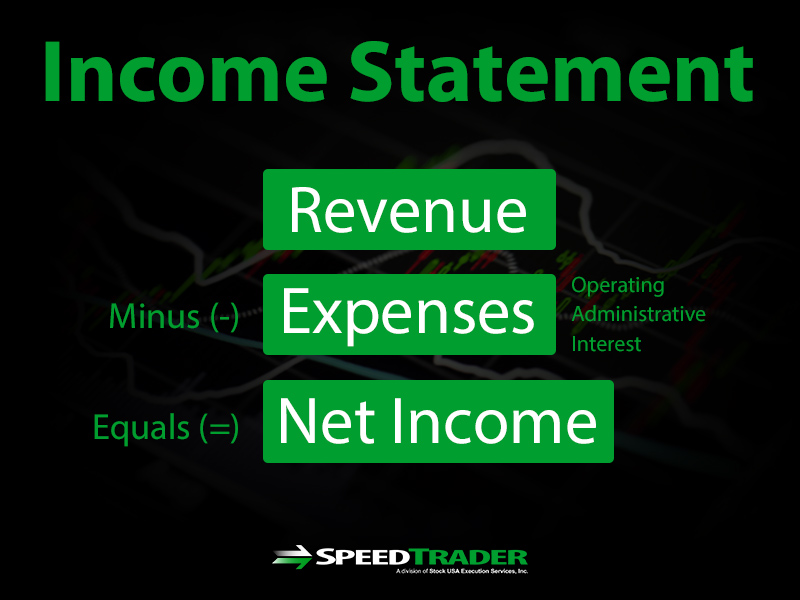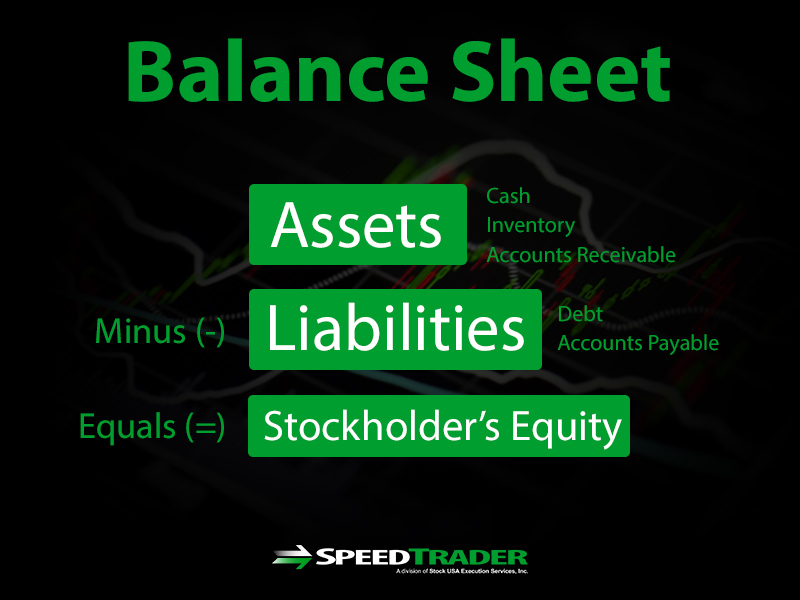U.S. based publicly traded companies are required to report their financial results every quarter to the U.S. Securities and Exchange Commission (SEC) through a 10-Q filing. The 10-Q document discloses the three basic financial statements that investors and shareholders use to determine the health of the company and its business operations. These are core pieces of information needed to perform accurate fundamental analysis on the numbers. Fundamental analysis is the examination of a company’s financials and business operations. The three core financial statements that detail the numbers are the income statement, balance sheet and cash flow statement.
Income Statement
The income statement discloses the revenues (sales) and operating expenses associated with running the business operations. Investors can use this document to determine if the company is operating efficiently. Here are a few important consideration:
- Revenues minus expenses will result in a gross profit or loss.
- The cost of goods sold (COGS) helps to identify supply chain metrics and operating margin analysis.
- The margin is what percentage of the sales is profit after backing out expenses.
The bottom line profitability is disclosed in the income statement. If the company shows a net loss, then it will have trouble with creditors and investor sentiment. The very bottom line of the income statement reveals the net income or loss for that quarter in terms of dollar amount and earnings per share. This bottom line result along with forward guidance tends to carry the most weight in determining how the shares will react afterwards.
Balance Sheet
The balance sheet illustrates the financial position of the company and discloses the assets, liabilities and shareholder equity.
Assets include property, inventory, supplies, equipment, goodwill, investments, accounts receivables and perhaps most importantly cash. This provides a snapshot what the company owns and owes. Goodwill and intangible assets tend to be a tricky as they can be subjective in nature. Be on the lookout if these values become excessive.
Non-GAAP Accounting
All public companies must abide by Generally Accepted Accounting Principles (GAAP), which are standard reporting guidelines for reporting financials. They factor in non-cash items and compensation like restricted stock and options grants. Many companies feel that investors can get a better picture of the underlying business operations if these items were left out of the reports. This is what non-GAAP financials try to show. Non-GAAP financials intend to show investors a different perspective, often a favorable one, by leaving out certain expense items that don’t affect the cash position. The true intentions can be questionable because this can result in very skewed results.
Many feel non-GAAP is not realistic and has even been called “fantasy math” since all compensation should be included in the financials. Almost every widely traded public company provides non-GAAP or “adjusted” earnings and revenue figures to accompany the GAAP reports. According to FactSet, 19 of the 30 companies in the Dow Jones Industrial Average included non-GAAP financials with their 10-K quarterly report for the first-quarter of 2016. These non-GAAP figures helped to “inflate” earnings on average by 28.9% compared to GAAP financials. For example, General Electric Company (NYSE: GE) reported GAAP earnings per share of $0.02 per share for Q1 2016. However, they also included the non-GAAP earnings per share of $0.06, a 200% improvement compared to GAAP. Analysts have mostly joined the bandwagon and often use non-GAAP numbers for their consensus estimates. Investors should always make the distinction between GAAP and non-GAAP reporting when analyzing a company’s business performance.
Cash Flow Statement
The cash flow statement shows how the company is utilizing and generating its cash. It provides details about cash receipts, payments and changes to cash position as a result of the company’s operating, investing and financing activities. Cash flow is the lifeblood of a company. Consistently growing cash flow organically through revenue, profit and margin growth is one of the strongest measures of a company’s financial well-being.




